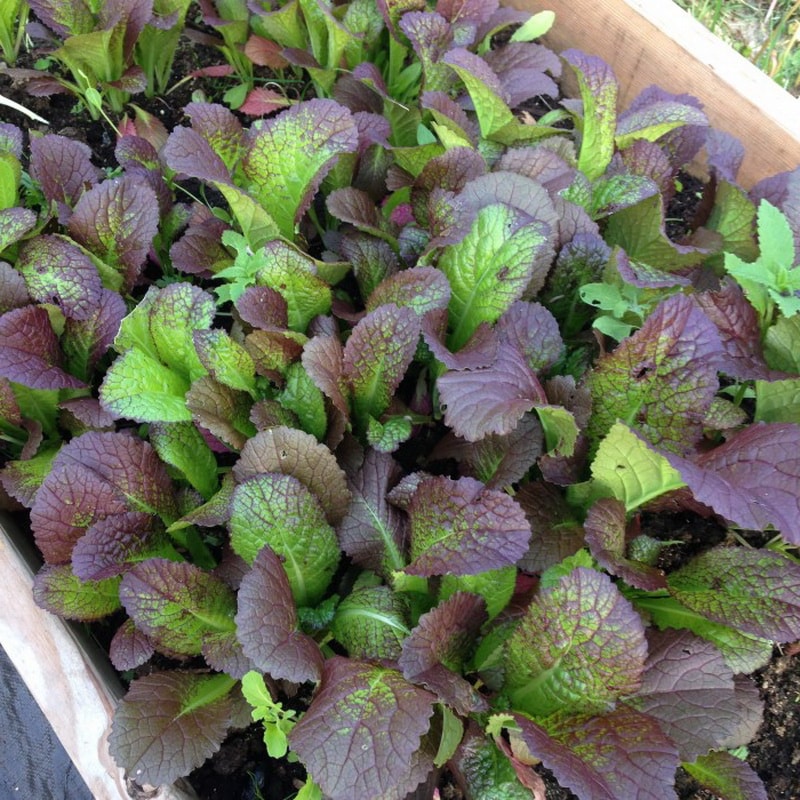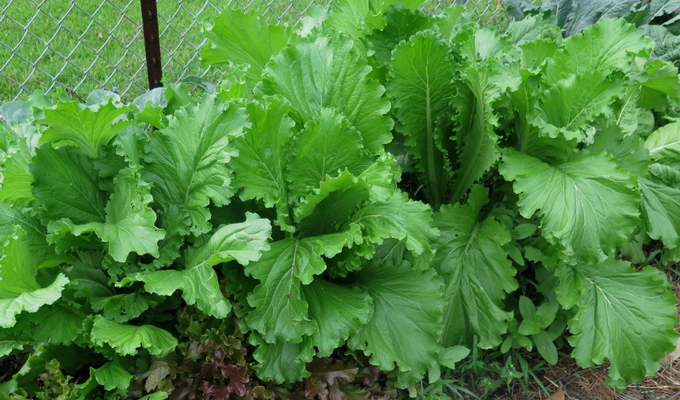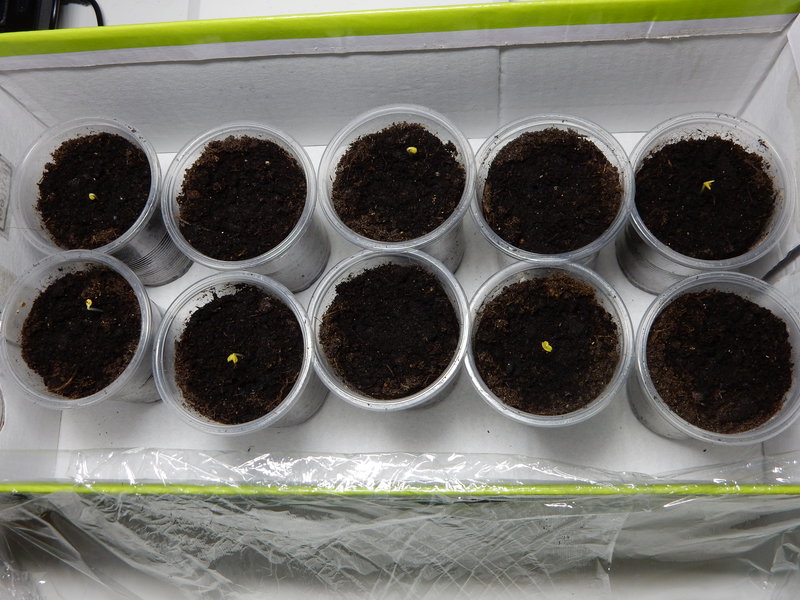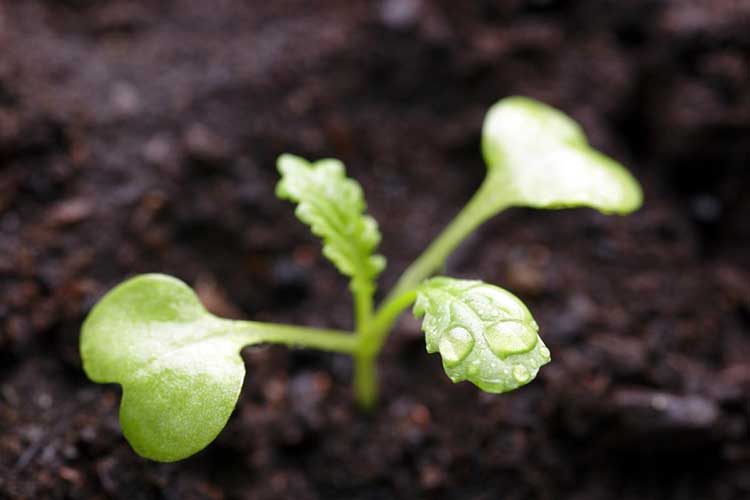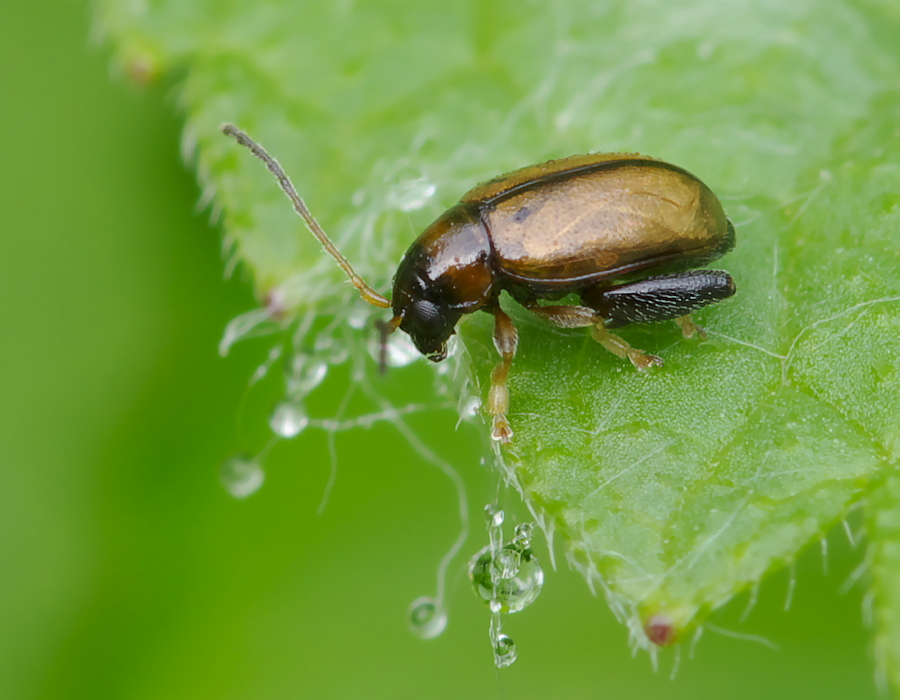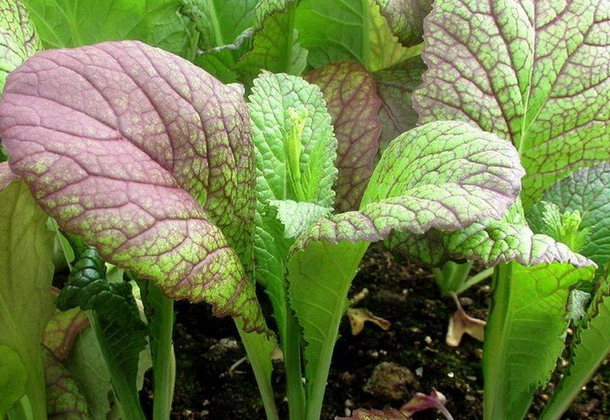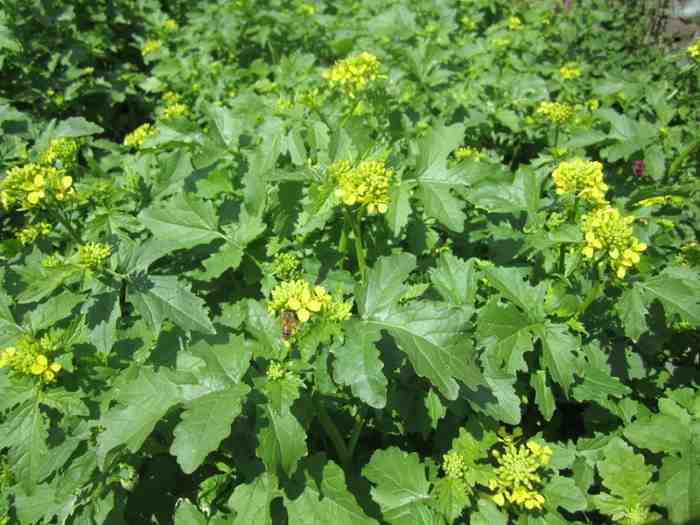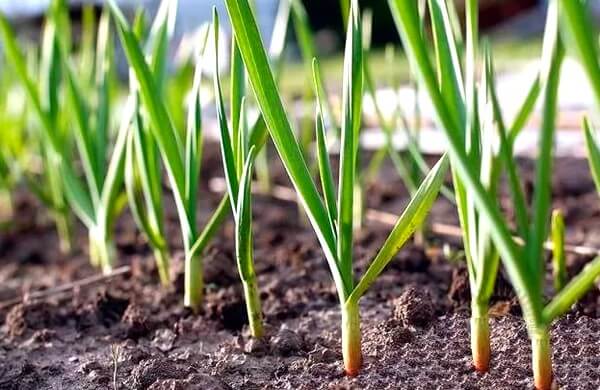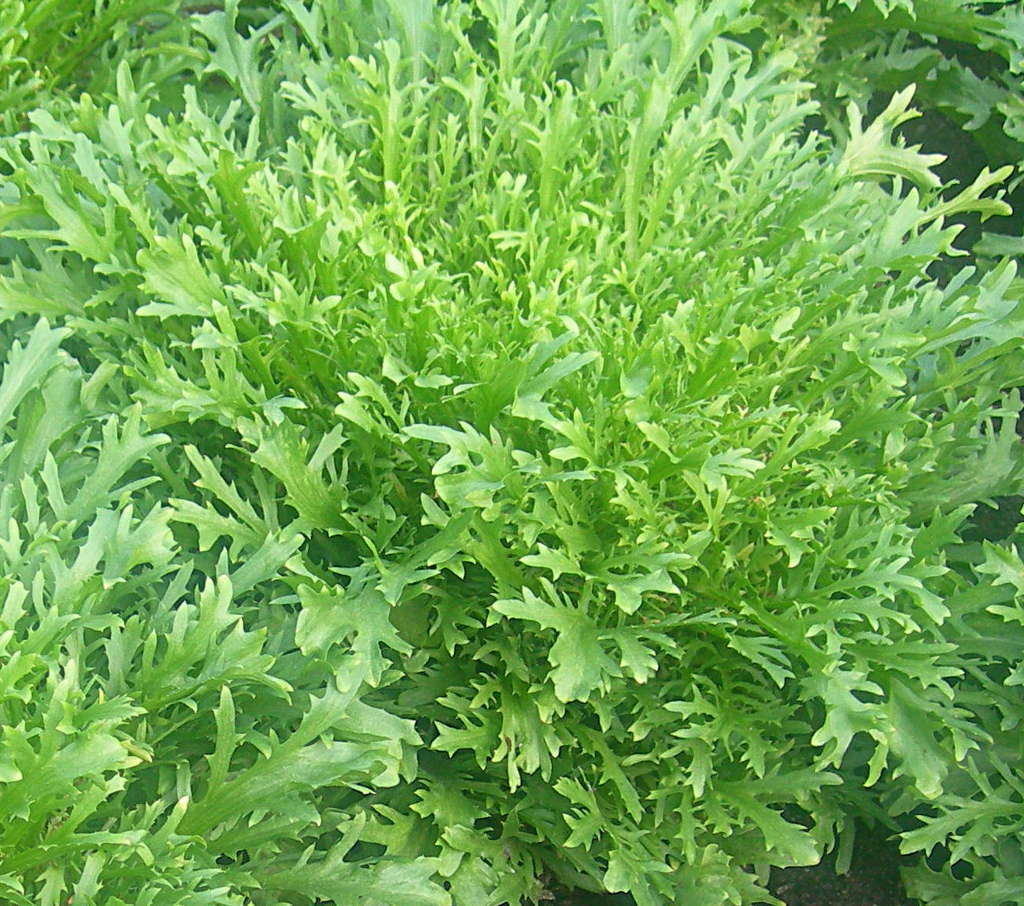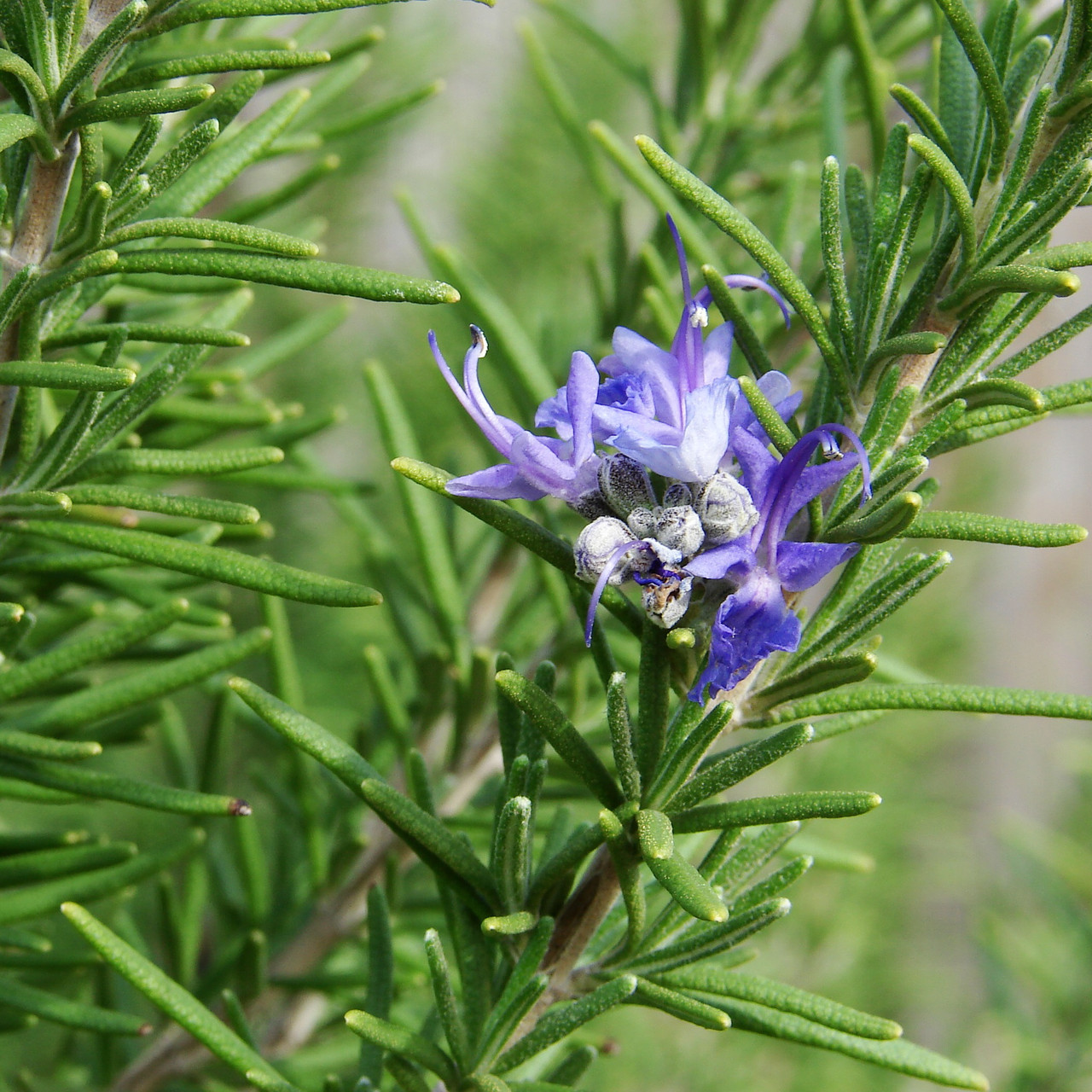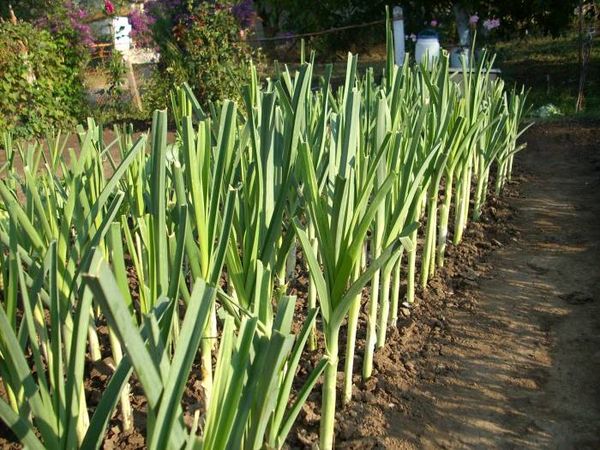Content:
Salad mustard is not very much in demand among summer residents of Russia, it is unfair in all respects. Culture is considered a source of useful elements that have a beneficial effect on the human body.
Low calorie content allows you to consume mustard in unlimited quantities. Sandwich cakes with mustard will decorate the festive table, their recipes are simple.
The plant is cultivated due to undemanding care, both on unprotected beds and under cover, and even on a loggia or apartment window. There is a chance to provide the whole family with a vitamin product throughout the year.
Description
Mustard mustard, or synapis, belongs to vegetable annuals from the Cabbage family, which are distinguished by frost resistance and the ability to please the harvest in a short time period. After 3 weeks after planting, you can enjoy a vitamin vegetable. In the first year, mustard leaves give a rosette when grown. The next year, the seeds ripen, which are used for the production of mustard seasoning and for medicinal purposes.
Mustard has been cultivated as a green salad for over 5000 years. The vegetable is believed to be native to the Indian Himalayas. But mustard is cultivated everywhere.
Today there is a varietal variety of mustards with foliage of various shapes (wavy and smooth) and shades (from green to deep red). The height of the mustard rosette ranges from 60 cm to one and a half meters. Some giant varieties form branchy stems.
Mustard leaves do not like planting in places illuminated by the sun, with excess moisture. When growing a crop in the summer season, which is characterized by the length of daylight hours, the site will have to be shaded using:
- slate;
- dark covering material;
- roofing material.
The short length of daylight limits the color of mustard. Cool weather is required, but not everything is subject to the vegetable grower.
Mustard propagation
Mustard reproduces by seed method. To get your seed from the spring-sown lettuce that blooms in mid-June, leave a few shrubs the next year. The number of seeds in one pod ranges from 12 to 20 pieces. Small seeds of a brownish hue, when falling to the soil, multiply by self-sowing.
Seed material is purchased in special stores or ordered on Internet sites.
The State Register of Breeding Achievements of Russia includes 18 types of varietal salad mustard. Among them are:
- Chastushka and Ladushka;
- I'll welcome Arigato too;
- Meiling and Beauty of the feast;
- Miracles in the sieve and the Doctor;
- The old doctor and the Mustang.
Popular mustard varieties
The following varieties are recommended for consumers for cultivation:
- Volnushka. Mustard Volnushka leaf belongs to the early maturing varieties. From the appearance of the first sprouts of mustard to the cutting of the foliage, 1 month passes. Rosette of leaves of mustard Volnushka powerful, erect, slightly spreading. The foliage is large, oval-oblong, not pubescent, pale green, wavy at the edges. Distinctive features: tenderness of petioles and leaves, excellent taste, fast growing of greenery. Harvesting mustard salad Volnushka begins when the vegetable reaches 7-8 cm in height.
- Vigorous. The growing season of the lettuce crop takes 28 days.The leaf rosette is large, branched, erect, reaching 30 cm. The bulky leaves of Vigorous mustard have slightly wavy serrated edges and short tasty petioles of a faded green color.
- Freckle. The ultra-early-ripening variety is grown for at least 25 days in an unprotected area or in a greenhouse to get early greens. Freckle yield per 1 m2 ranges from 3.5 to 3.8 kg. Semi-branched foliage rosette reaches 25-28 cm and weighs 170 g. A large leaf is characterized by tenderness and juiciness. Fresh greens are valued for their beneficial substances: mustard oil, vitamins, ascorbic acid, mineral salts, which give the leaves a slightly tangy, spicy taste and attractive aroma. Suitable for making sandwiches and salads.
Sowing with seeds and care
Mustard grows in virtually any type of soil. To grow mustard leaves, you need to prepare the correct soil. It is advisable to choose shaded beds with loose, weakly acidic or neutral soil without a close occurrence of groundwater. Good mustard precursors include:
- potatoes and tomatoes;
- cucumbers and eggplants;
- beets and peppers.
Since autumn, digging is carried out with the introduction of 3 kg of compost, 15 g of superphosphate, 10 g of potassium chloride per 1 m2 of area. When the soil is acidic, add dolomite, crushed egg shells, ash, slaked lime, depending on the level of acidity: per 1 m² - 0.3-0.7 kg.
Mustard is a cold-resistant crop. Seeds grow at + 2 ... + 3 ° C. The emergence of sprouts occurs at + 12 ° C after 4-5 days. Saplings tolerate frosts down to -6 ° C.
The green vegetable is planted in 3 stages. If the planting time is violated, the mustard coarsens, the taste deteriorates. The first sowing is carried out before April 25. The subsequent planting of fresh crops is the third decade of May, the final replanting is carried out on August 10.
The ideal time to grow mustard salad is spring or the end of the summer season. The temperature is optimal, which does not exceed +20 ° C.
In the heat, avoid sowing seeds:
- salad mustard will be shot;
- foliage will coarsen and lose taste;
- less greenery is produced.
When space permits in the greenhouse, mustard is sown in the aisles of vegetable plants.
Follow the landing pattern:
- row spacing - 25 cm;
- seeding depth - 1 cm.
The grooves are watered with lukewarm water after planting. Water it moderately, try not to overmoisten the plants. Seedlings appear after 5 days.
When 2-3 leaves are pecked, the mustard is thinned out to ensure the good development of vegetable crops.
Growing mustard at home
Unassuming mustard feels good on the windowsill with the onset of cold weather. An important condition is maintaining an optimal temperature regime at home.
Before planting, the seeds are disinfected in a weakly acidic solution of potassium permanganate. The planting containers for mustard are processed. To speed up the process of germination of the seed, moisten the tissue and leave it for 3 or 4 days. The sprouted sprouts can be grown in individual cassettes, pots, peat tablets.
The container is filled with soil from the dacha, adding vermicompost or coconut fiber. Remember the holes for the liquid outlet and drainage at the bottom. Prepared earth is poured onto the expanded clay layer. The mustard seeds are buried 1 cm. Moisten the soil and cover with polyethylene.
Expose mustard leaves to cool and wait for the sprouts to appear. The ideal temperature for growing mustard in a room is up to + 23 ° C. Maintain air humidity - 60%.
The formation of 2-3 leaves is a signal to transplant seedlings into a spacious container.After 21 days, mustard leaves are used in nutrition.
Intensive watering daily prevents premature arrows. Sprinkle mustard leaves with a spray bottle.
Mustard care secrets
When leaving for leaf mustard, the following procedures are performed:
- Systematic weed removal and loosening between rows.
- Moderate watering. Prevents the soil from drying out to preserve the juiciness and taste of the green mass.
- Fight against harmful insects. When cruciferous fleas attack, sprinkle mustard with wood ash in the morning. The operation is repeated regularly. Plants are planted near an open area with a pungent odor that scares off parasites: onions, lettuce, marigolds, calendula.
- Fertilizer. The vegetable is fed 2 weeks after sowing. Due to the early maturity of plants, mustard is fed with natural means, for example, fermented herbal infusion. Liquid chicken manure is suitable, which is brought in at a rate of 1:15. Just right a mullein in a ratio of 1:10 or urea (for 10 liters of water 10 g of the drug). When the growth of seedlings slows down, the mustard is fed with an ash solution, which is prepared from 100 g of the product for 5 liters of liquid and left to infuse for 8 hours. When the site is fertilized with organic matter, do not overdo it with fertilizing.
- Thinning. If 1-2 true leaves appear, the shoots are necessarily thinned out, leaving a distance between crops of 5 cm. Subsequent thinning is required when 4 full-fledged leaves are formed, the distance between individuals is increased to 15 cm. The thickening of mustard plantings contributes to a decrease in yield.
When thinning salad mustard, do not pull out the shoots along with the roots. The mustard bushes are pruned at soil level, leaving the roots to decompose in the ground. Manipulation benefits the personal plot:
- soil enrichment with plant waste;
- disinfection from harmful microorganisms;
- implementation of crop rotation.
Harvesting
Eating is possible a month later or a little earlier after disembarkation. When leaf mustard reaches 10-15 cm in height, they begin to harvest. As soon as the mustard leaves flower stalks, the harvesting of vegetable crops from the garden is suspended. The leaf outlet is cut with a sharp knife or scissors.
The cultivation of mustard salad from seeds is not difficult. The inclusion of a salad vegetable in your diet is not harmful. Useful properties of mustard leaf allow it to be used not only in cooking, but also as a siderat:
- improves the biological activity of the soil;
- disinfects soil from phytopathogens.
